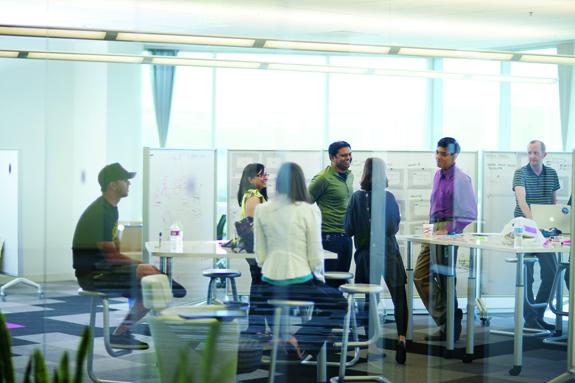The Much Maligned “Cubical Farm” Is Disappearing
May 20, 2014

The office cubical appeared on the scene in 1964 and dominated the office design landscape for the next fifty years. In fact, the “cubical farm” became symbolic of all that was wrong with corporate culture as exemplified most famously in the Dilbert cartoon series. The demise of the cubicle is good news for many disgruntled cube denizens.
In working with my clients, I see the office space of the future taking shape as the cubicle is replaced with space more closely aligned with the goals of concentration, collaboration and community. The goal today is to achieve maximum productivity by using these “three C’s” to create high performance work environments.
To achieve this, it is important to analyze space usage carefully so that space for “concentration” is allocated first. This type of work will be performed in private offices and well designed open plan work stations. Only after adequate attention is given to concentration space should “collaborative” space be added.
The conscious focus of aligning space allocation and productivity has caused a shift in the amount of space allocated for each focused work, collaborative effort and community interaction. Traditionally, approximately 70% of office space was used for individual office space with the remaining 30% allocated to shared space. Today, approximately half of space will be individual, and the other half used for shared purposes. This holds true in widely divergent industries, from financial services to media to healthcare and everything in between.
While this trend is allowing businesses to consolidate their footprint and occupy less space, there is a benefit to workers as well. Instead of spending many hours in an isolated cubicle, the modern workspace requires its occupants to move around during the course of the day. A typical day might start with focused time to prepare a report and end with presenting it in a collaborative environment that brings together colleagues across different geographies.
The demise of the cubicle and its replacement with space that is more attractive and functional enhances both productivity and community is a welcome development.
Where is your organization in the move to high performance workspace?
< Return to News